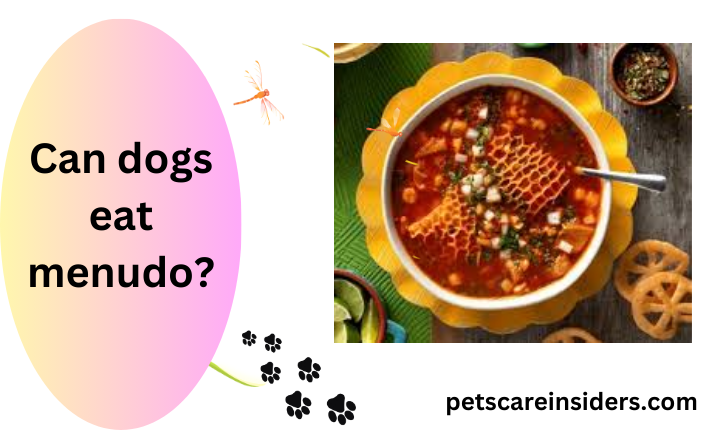Menudo, a beloved traditional Mexican soup made primarily with tripe (beef stomach) and a savory broth of red chili peppers, is a staple in many households. As dog owners, we frequently ponder whether our pets can eat any of our favorite meals, including menudo. Fortunately, dogs can eat menudo, but it comes with essential caveats to ensure their safety and health. Learn more about dog care.
First and foremost, tripe, the main ingredient in menudo, offers several dog benefits. Tripe packs essential nutrients, including protein, vitamins, and minerals, and promotes digestive health due to its high digestive enzyme and probiotic content. However, the traditional recipe includes ingredients that can harm dogs, such as onions, garlic, and spices. These can lead to toxicity, gastrointestinal upset, and other major health problems in dogs. Therefore, if you plan to give your dog menudo, it’s crucial to prepare it without these harmful ingredients and serve it in moderation.
Ingredients
Menudo is typically prepared with the following ingredients:
Tripe: The main component, providing a chewy texture and rich flavor.
Red Chili Pepper Broth: Adds heat and depth.
Hominy: A type of processed maize is often included in the recipe.
Seasonings and Aromatics: Commonly contains onions, garlic, oregano, and salt.
Essential Things to Think About When Giving Dogs Menudo
- Ingredients: Tripe, the primary ingredient in menudo, is safe and beneficial for dogs. It contains essential nutrients, including protein, vitamins, and minerals. Tripe also promotes digestive health due to its high content of digestive enzymes and probiotics. However, other ingredients in menudo may not be suitable for dogs.
- Harmful Additives: Onions and garlic, which are harmful to dogs, are frequently used in traditional menudo preparations. These elements include substances that have the potential to harm red blood cells and cause hemolytic anemia. Ensuring these are completely absent from any menudo you offer your dog is important since even tiny amounts of them can be dangerous.
- Spices and Seasonings: Menudo’s distinctive flavor comes from spices like chili peppers, which can be too spicy for dogs and cause gastrointestinal distress. High salt content is another concern, as excessive sodium can lead to dehydration and, in severe cases, sodium ion poisoning.
- Safe Preparation: If you prepare menudo for your dog, use plain, unseasoned tripe. Cook it thoroughly without spices, onions, garlic, or excess salt. This will ensure that it is safe for your dog to consume.
It’s important to remember that moderation is vital when you introduce new foods to your dog’s diet. Rapid or excessive introduction of new foods can lead to upset stomach symptoms like vomiting or diarrhea. By starting with small portions and observing your dog’s reaction, you can ensure a safe and enjoyable experience for your pet.
Health Benefits of Tripe for Dogs
When prepared correctly, tripe offers several health benefits for dogs:
- Nutrient-rich: Tripe is high in protein, which is necessary for the development and repair of muscles. It also has a variety of minerals and vitamins, including zinc, selenium, and B vitamins, which boost immunity and enhance general health.
- Digestive Health: Tripe contains a high amount of probiotics and digestive enzymes. These ingredients may facilitate better digestion and nutrient absorption for your dog. Additionally, probiotics support a balanced population of gut bacteria, which is important for preventing gastrointestinal problems.
- Joint and Bone Health: Tripe’s natural glucosamine and chondroitin, which promote joint health, may benefit dogs with arthritis or other joint issues.
How to Introduce Menudo to Your Dog’s Diet
To guarantee your dog’s delight and safety when you share menudo with them, follow these rules:
- Speak with Your Veterinarian: Before introducing any new meals to your dog, seek guidance from your veterinarian. They can provide customized advice based on your dog’s health, dietary needs, and medical history.
- Start Small: Begin with a small portion of plain, unseasoned tripe. Watch for your dog’s behavior and vomiting, diarrhea, or other adverse reaction symptoms. If your dog tolerates the tripe well, you can gradually increase the portion size.
- Balance the diet: Don’t let menudo replace your dog’s food. Menudo ought to be a special occasion rather than a regular occurrence. Ensure your dog’s food contains all the nutrients found in regular dog food and is balanced.
- Avoid Harmful Ingredients: Never include onions, garlic, spices, or excessive salt in the menudo you give to your dog. Stick to plain tripe to avoid potential health risks.
Conclusion
While dogs eat menudo when prepared correctly, it’s crucial to be mindful of the ingredients and portion sizes. Tripe, the main component of menudo, offers several health benefits for dogs, but traditional recipes often contain harmful additives like onions, garlic, and excessive spices. By preparing plain, unseasoned tripe and consulting with your veterinarian, you can safely introduce menudo as an occasional treat in your dog’s diet. Always prioritize your dog’s health and well-being, and make informed choices about the foods you share with them.
